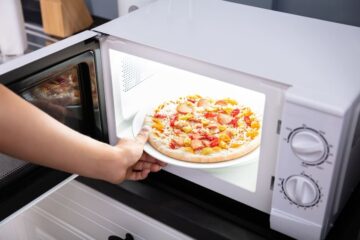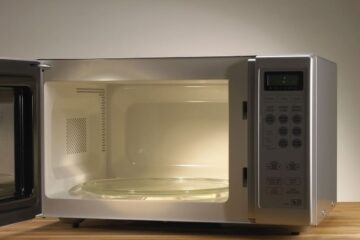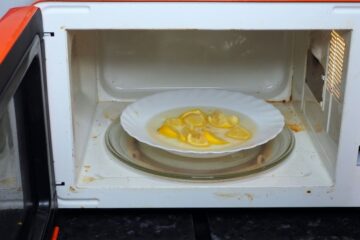Microwave convection ovens are versatile appliances that can be used for a wide range of cooking tasks, including toasting bread. Toasting bread in a microwave convection oven is a quick and convenient way to enjoy crispy, golden-brown toast without the need for a separate toaster. In this article, we will walk you through the process of toasting bread in a microwave convection oven, from understanding your appliance to selecting the right bread and preparing it for toasting.
Understanding Your Microwave Convection Oven
Before you start toasting your bread, it’s important to understand the different parts of your microwave convection oven and the settings you’ll need to use. Here are some key things to keep in mind:
Parts of the microwave convection oven
Your microwave convection oven will typically have several key parts, including a turntable, a control panel, and a heating element. The turntable helps to ensure that your food cooks evenly, while the control panel allows you to select the desired cooking mode and temperature. The heating element is what generates the heat that is used to cook your food.
Settings for toasting bread
Most microwave convection ovens will have a dedicated “toast” setting that you can use to toast your bread. This setting will typically be found on the control panel, along with other cooking modes such as “bake” and “roast”. Be sure to consult your oven’s manual for specific instructions on how to use the toast setting.
Safety precautions
When using your microwave convection oven, it’s important to follow some basic safety precautions to avoid injury or damage to the appliance. Always ensure that the oven is properly ventilated and never use metal or aluminum foil in the oven, as this can cause a fire. Additionally, be sure to use oven mitts or a thick towel when handling hot dishes or removing them from the oven.
Selecting the Right Bread
Not all breads are created equal when it comes to toasting in a microwave convection oven. Here are some tips for selecting the right bread for your toasting needs:
Types of bread suitable for toasting in a microwave convection oven
When toasting bread in a microwave convection oven, it’s important to choose a bread that is sturdy enough to hold up to the heat without becoming too dry or burnt. Some good options include sourdough, French bread, and whole-grain bread.
Choosing the right thickness of bread
The thickness of your bread can also impact the toasting process. If your bread is too thin, it may become overcooked or burnt, while bread that is too thick may not cook evenly. A thickness of around 1/2 inch is typically ideal for toasting in a microwave convection oven.
Tips for selecting the perfect bread
When selecting bread for toasting, be sure to look for a loaf that is fresh and free from mold or other signs of spoilage. You may also want to consider the flavor and texture of the bread, as some varieties may be better suited to toasting than others.
Preparing the Bread for Toasting
Now that you’ve selected the right bread, it’s time to prepare it for toasting. Here are some key steps to keep in mind:
Slicing the bread evenly
To ensure that your bread toasts evenly, it’s important to slice it evenly. You want to avoid having one part of the bread burnt while the other part is still uncooked. When slicing bread, use a sharp bread knife or a serrated knife to make clean and even cuts.
It’s also essential to consider the thickness of the bread slices. If the slices are too thick, the center of the bread may remain uncooked while the surface gets burnt. On the other hand, if the slices are too thin, they may become too crispy or dry. A thickness of around 1/2 inch is ideal for most types of bread.
If you’re not sure about the thickness, you can do a quick test run with a slice of bread to determine the right thickness. Place a single slice in the oven and toast it for a few seconds. If it’s too thin, adjust the thickness accordingly for the next slice.
Once you’ve sliced the bread, you can apply butter or oil on the surface. This helps to prevent the bread from drying out during the toasting process. It also adds flavor to the bread.
Applying butter or oil
- Applying butter or oil is easy. You can either use a brush or a paper towel to apply a thin layer of butter or oil on the bread slices. Be sure not to overdo it as too much butter or oil can cause the bread to become too greasy or soggy.
- After applying the butter or oil, it’s time to preheat the microwave convection oven.
- Preheating the Microwave Convection Oven
- Before toasting the bread, it’s crucial to preheat the microwave convection oven. This ensures that the oven is at the right temperature for toasting.
- To preheat the oven, set it to the desired temperature and let it run for a few minutes. Most microwave convection ovens have a preheat function that makes this process more manageable.
- Once the oven is preheated, it’s time to toast the bread.
Toasting Bread in a Microwave Convection Oven
Toasting bread in a microwave convection oven is easy and straightforward. Here is a step-by-step guide on how to toast bread in a microwave convection oven:
- Place the bread slices in a microwave-safe dish or on a microwave-safe plate.
- Set the microwave convection oven to the toast setting. If your oven doesn’t have a toast setting, use the convection setting instead.
- Set the time for toasting. The toasting time varies depending on the thickness of the bread slices and your desired level of toasting. As a general rule, start with 15-20 seconds and adjust the time as needed.
- Press the start button to begin toasting.
- Keep an eye on the bread slices as they toast. Check on them periodically to ensure that they’re not burning.
- Once the toasting is complete, remove the bread slices from the microwave convection oven.
Tips for Achieving Perfect Toasting Results
Here are some tips to help you achieve perfect toasting results:
- Adjust the toasting time based on the thickness of the bread slices and your desired level of toasting.
- Keep an eye on the bread slices as they toast to prevent them from burning.
- Use the toast setting on your microwave convection oven if available.
- If your oven doesn’t have a toast setting, use the convection setting instead.
- Apply butter or oil to the bread slices before toasting to prevent them from drying out.
- Always preheat the microwave convection oven before toasting to ensure that it’s at the right temperature.
Troubleshooting
If you’re experiencing issues when toasting bread in your microwave convection oven, don’t worry. Here are some common problems that people face while toasting bread in a microwave convection oven, and the solutions to fix them.
- Uneven Toasting: One of the most common issues when toasting bread in a microwave convection oven is uneven toasting. This can happen when the bread is not sliced evenly, or when the oven is not preheated properly. To solve this problem, ensure that you slice the bread evenly and place it on the microwave-safe plate in a single layer. Also, preheat the oven for a few minutes before placing the bread inside.
- Burnt or Over-Toasted Bread: Another issue that people face when toasting bread in a microwave convection oven is burnt or over-toasted bread. This can happen when the oven temperature is too high or when the bread is left in the oven for too long. To avoid this, make sure you select the right toasting option and the appropriate setting, and keep an eye on the bread while it’s toasting.
- Bread Sticking to the Plate: Sometimes, bread can stick to the plate while toasting in a microwave convection oven. This can happen when the plate is not greased properly or when the bread is too thin. To fix this issue, ensure that you apply a thin layer of butter or oil to the plate, or use a non-stick plate. Also, avoid toasting very thin bread slices.
- Bread Becoming Soggy: If your bread is becoming soggy while toasting in a microwave convection oven, it could be due to excess moisture in the oven. To solve this, wipe the oven dry before toasting the bread. Also, make sure that you don’t overheat the oven, as this can cause the bread to become soggy.
By following these simple troubleshooting tips, you can ensure that your bread toasts perfectly in your microwave convection oven every time.
Alternative Toasting Methods
While toasting bread in a microwave convection oven is a quick and easy option, there are other methods available as well. Let’s take a look at some of them.
- Toaster: A toaster is the most common appliance used for toasting bread. It’s a quick and easy option, and allows you to toast multiple slices at once. To use a toaster, simply insert the bread slices into the toaster slots and select the desired toasting level. The toaster will automatically turn off once the toasting is complete.
- Oven: Toasting bread in an oven is also a popular option. To do this, preheat the oven to 350°F, place the bread slices on a baking sheet, and toast for about 10 minutes or until the bread is golden brown.
- Stove-top: Toasting bread on a stove-top is a traditional method that involves placing the bread directly on the stove’s burner. This method is not recommended, as it can be dangerous and may result in burnt bread.
Comparison with Toasting Bread in a Microwave Convection Oven
When compared to other toasting methods, toasting bread in a microwave convection oven has several advantages. It’s quick, easy, and requires minimal effort. Moreover, it’s a great option for those who have limited space or don’t have access to other toasting appliances like a toaster or oven.
However, toasting bread in a microwave convection oven may not produce the same level of toasting as a toaster or oven. Additionally, it may not be suitable for toasting certain types of bread, like artisanal bread, which requires a longer toasting time.
Cleaning and Maintaining Your Microwave Convection Oven Proper cleaning and maintenance of your microwave convection oven is essential to ensure optimal performance and longevity. Here are some tips for keeping your microwave convection oven clean and well-maintained:
Tips for Keeping Your Microwave Convection Oven Clean:
- Clean the interior of the oven regularly with a damp cloth or sponge. Avoid using abrasive cleaners or harsh chemicals that may damage the interior surfaces.
- Clean the exterior of the oven with a soft, damp cloth. Avoid using harsh chemicals or abrasive cleaners that may scratch the surface.
- Clean the turntable and other removable parts with warm soapy water. Rinse thoroughly and dry before reinstalling.
- Wipe down the door and the seal regularly to remove any grease or food residue.
- Use a microwave-safe cover to prevent spills and splatters from staining the interior of the oven.
Maintenance Practices to Ensure Optimal Performance:
- Check the door seal regularly for any signs of wear or damage. A damaged door seal can result in reduced efficiency and performance.
- Check the turntable and other removable parts for any signs of damage or wear. Replace any damaged parts to ensure optimal performance.
- Keep the ventilation grills clean and clear of any obstructions to ensure proper airflow and ventilation.
- Follow the manufacturer’s instructions for replacing the charcoal filter, if applicable.
Safety Tips for Cleaning the Oven:
- Unplug the microwave convection oven before cleaning to avoid any risk of electric shock.
- Allow the oven to cool before cleaning to avoid any risk of burns.
- Avoid spraying or applying any cleaning products directly onto the interior surfaces of the oven.
By following these tips, you can ensure that your microwave convection oven remains clean, well-maintained, and in optimal working condition.
Benefits of Toasting Bread in a Microwave Convection Oven
Toasting bread in a microwave convection oven offers a variety of benefits, including:
- Health Benefits: Toasted bread is lower in calories than untoasted bread, making it a healthier option. Additionally, toasting bread can help reduce the amount of acrylamide, a chemical that forms naturally in starchy foods during high-temperature cooking.
- Environmental Benefits: Microwave convection ovens consume less energy than traditional ovens, making them an eco-friendly option. Additionally, toasting bread in a microwave convection oven produces fewer greenhouse gases than toasting bread in a conventional oven.
- Economic Benefits: Microwave convection ovens are generally more affordable and cost-effective than traditional ovens. Additionally, they consume less energy, which can help reduce your energy bills over time.
Conclusion
Toasting bread in a microwave convection oven is a quick, easy, and convenient way to enjoy crispy and delicious toast. By following the tips and techniques outlined in this article, you can ensure that your toast comes out perfectly every time. So go ahead and try toasting your bread in a microwave convection oven today and enjoy the benefits of this quick and easy method!



